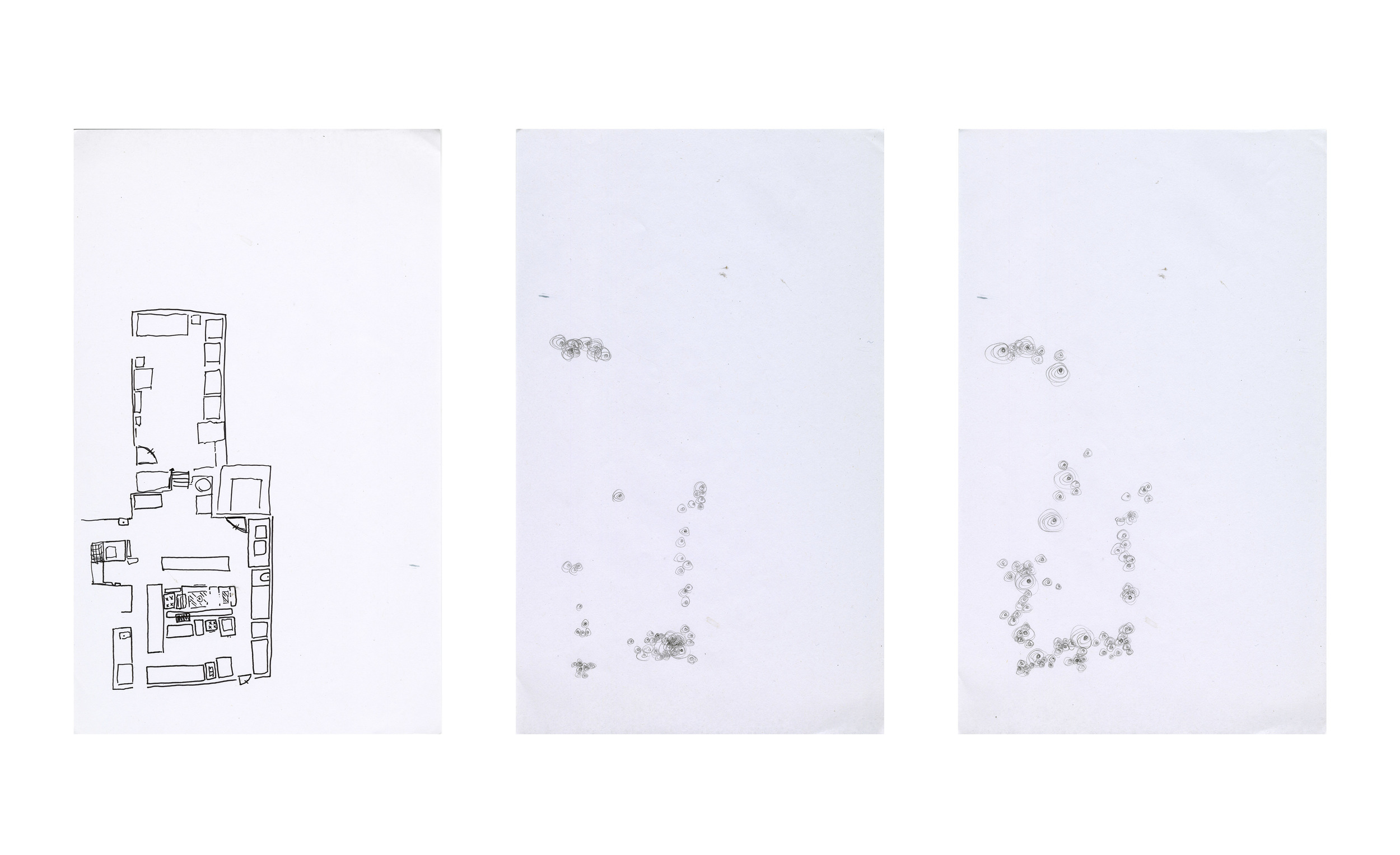Space walking leads to maps of the Pale Blue Dot
MAPS
A Walking Excursus
Maps accommodate movement. Sometimes they emerge spontaneously, through a set of constraints, depending on the space traversed, path taken. They always involve running lines that become multiple entry/exit points. (Look at the palm of your hand, it is a map.) Maps denote a popping of perspective. (Zoom out and you will see a map.) Once a map is traced, an immanent territory is removed. We have treaded beyond its vantage point, to another one. On the other hand, maps have their own propulsion, lines of creation, which extend us and recreate us. We inscribe ourselves into space, literally cut into it. That is to say, we are where we go, either with our feet or with our thought.
1.
THE DELIGNY CODE (2015-)
During service when something is "picked up," it is a code for putting the final moves together for the dish. Creation in the last instant, a culmination of movements and gestures. The steps, waves, stretches, pinches, pokes, ... in the final moments all put together. The result: a dish - a diagram of motion in its own right. These drawings are both their own force of motion and a tracing of motion (inspired by Fernand Deligny’s diagrams of the movement of autistic children).

2.
MUSICAL INTERVAL (2015-)
Walking in the kitchen is accompanied by an acoustic footprint: behind, corner, hot, sharp, knife, open, down low, right around, up top, coming in... All these calls break the silence and alert others of crossing trajectories. In this diagram, intensity and frequency of two stations' calls are placed alongside a kitchen schematic. The score is synchronic and the notes left to the performers' discretion.

3.
FOUND MAPPINGS (2015-)
Gifts of labyrinths, whirlpools, and vortexes from children with refined taste. Here, a child's palette should guide our palates into the domain of wonder and awe.




